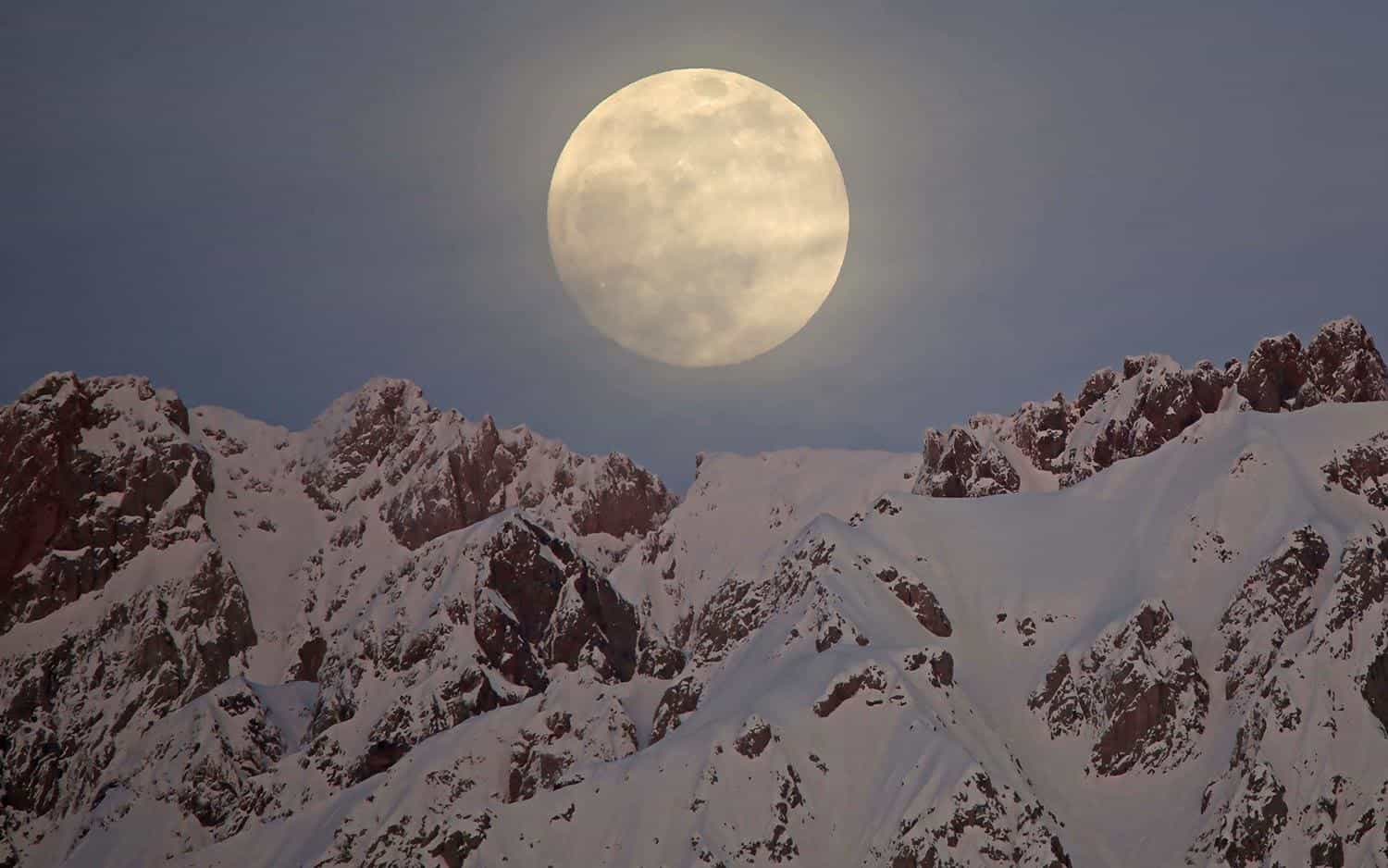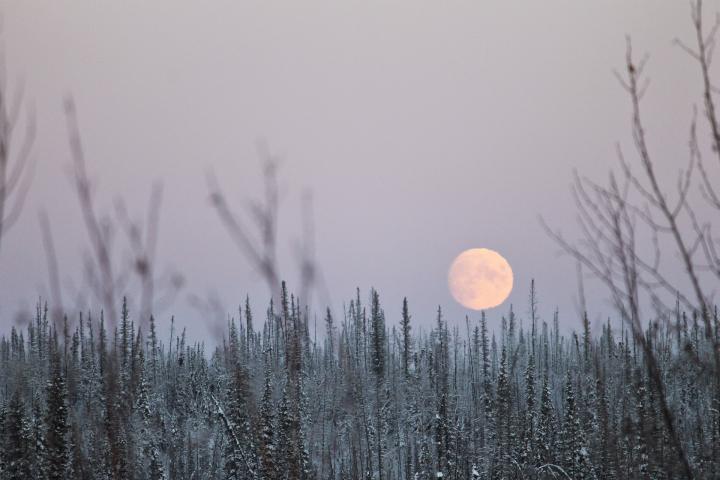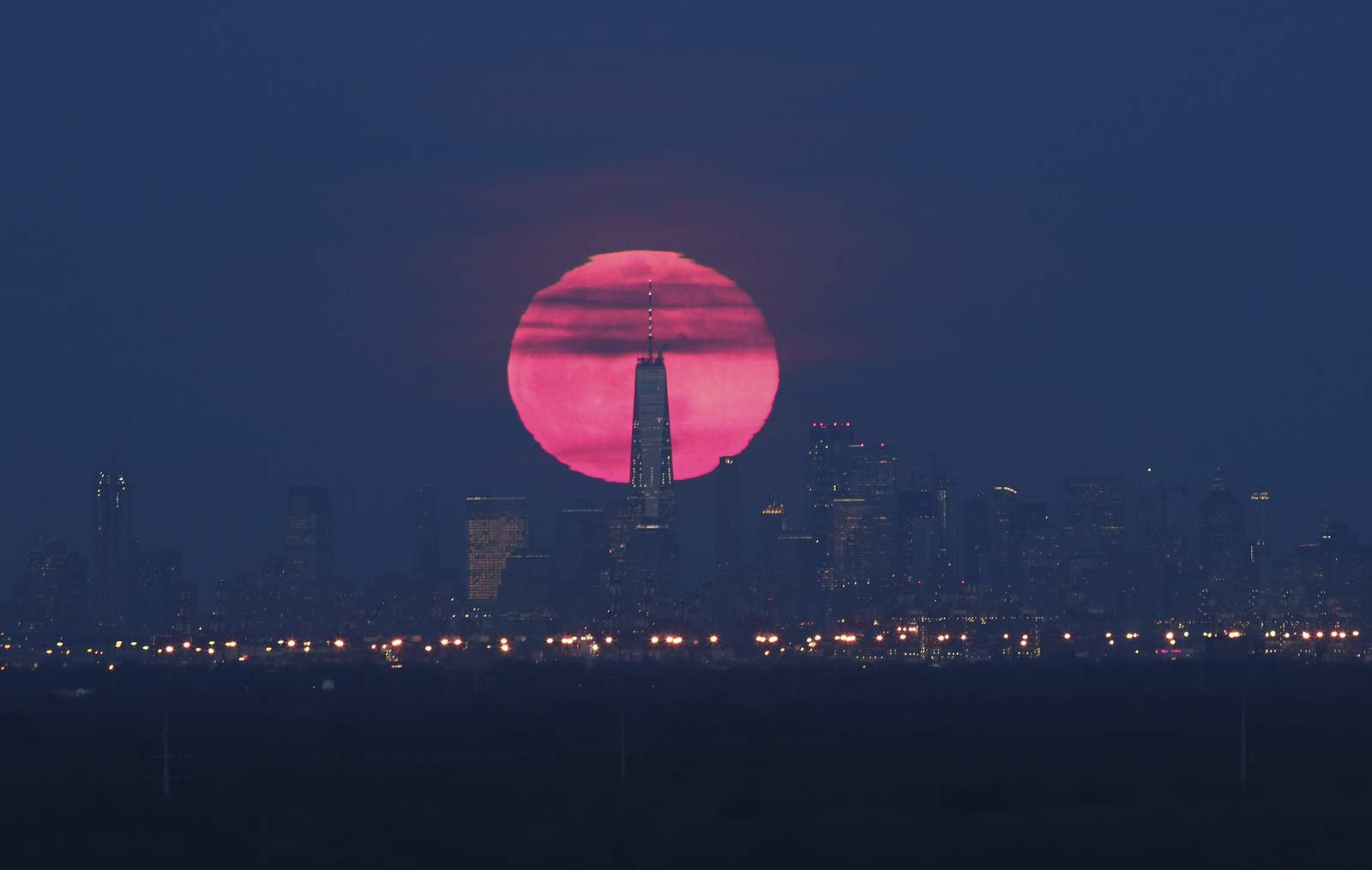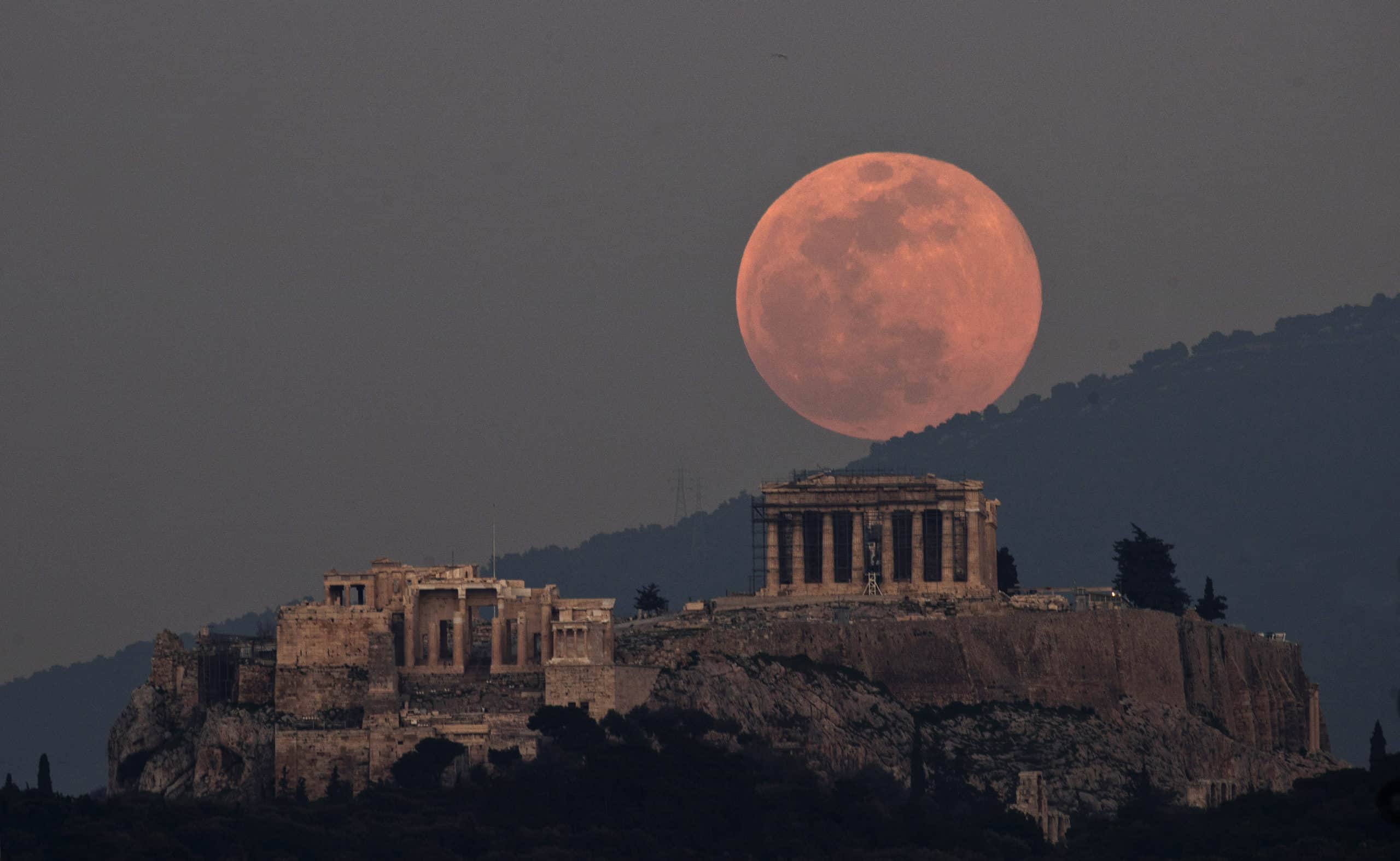The February Full Moon, also known as the Snow Moon, is among the most beautiful full moons of the year. It is a larger than average full moon since the Moon is closer to Earth in that period of time.

Many cultures around the world were awed by this and have incorporated the February Full Moon in their tales and legends. With that being said, here are some stories regarding the February Full Moon.
Full Moon Names For February
From ancient times, both European and Native American people used the Lunar calendar. They usually named every month’s Moon, and very often, the names are very similar.
Almost in every tradition, the February full moon is named Snow Moon. It was named this way because February is known for heavy snowfalls and storms in the USA and Europe.

Different tribes had other names for this Full Moon as the Cherokee tribe described it as the Bone Moon. The Wishram named it the Shoulder to Shoulder Around the Fire Moon. The Cree described it as when the hunters had the most difficult time catching any food and called it the Great Moon. It was also known as the Bear Moon in the Ojibwe tribe.
Meanwhile, in the Southern Hemisphere, in New Zeeland, the Mauri described this lunar month as a month when the crops are harvested, as February takes place during the summer there.
Moon Phases For February 2021
In the first two days of the month, the Moon will be in the waning gibbous phase. On the 3rd and 4th of February will be in the Last Quarter with a 65% visibility and 53%.
From the 6th until the 9th of February, we will be able to see the Waning crescent phase, and then, the New Moon will appear on the 10th, 11th, and 12th of February with maximum visibility of 2% on the first day.
Between the 13th and18th of February, we will experience the Waxing crescent phase. Staring with the 21st of February until the 26th, the Moon will be in the Waxing gibbous phase.
The First Quarter will also last three nights, from the 18th to the 20th. The Full Moon of February 2021 will have a 100% visibility from 26Th to 28th.
Waxing and Waning Phases
When the illuminated surface of the Moon, as seen from Earth, is increasing, the Moon waxes from a new moon to a full moon. The phases are new moon, crescent moon, first-quarter moon, gibbous Moon, and Full Moon.
The process of going back from full Moon to gibbous Moon, third-quarter moon, crescent moon, and again the new Moon is called waning.

Snow Moon Meaning
Every month’s full Moon has a specific name based on nature’s characteristics in that moment of time. The Native Americans used to call this Moon as the Hunger Moon. At this time of the year, many people ran out of food that they stored for winter. February was a very tense time.
The personality of the Snow moon can teach us a lot about insight and growth. It is a perfect time for introspection, for forgiveness, and new starts or do-overs during a Snow Moon. It is a period rich in opportunities and the best time to recognize your value.
How Often is There a Super Snow Moon?
They occur not that often, maybe two or three years apart. Some astrologers, such as Fred Espenak, claim that on the 9th of February 2020, we had a Super Snow Moon, but others disagree.
A Super Moon may create stronger weather events or ocean tides and occur when the Moon is closest to Earth. The term Super Moon is very debatable because the International Astronomical Union has not defined the term yet.

A Super moon seems larger because it reaches the perigee, the closest point from Earth. In this case, it will be 360,461 kilometers / 223,980 miles away. The average distance between the Moon and us is 384,400 km / 238,855 mi. The difference is very small
This February Full Moon will miss the perigee by a day, so this is why the astrologists are skeptical if it is entitled to be called a Super Moon or not. Until the 1970’s nobody paid attention to Super Moons. The first astrologer gave the name for a moon that is within 90% of its perigee.
Snow Moon Spiritual Meaning
The Full Moon is often considered a sign of death, tension, emotion, or rebirth. A lot of stress may occur as the Moon and the Sun are aligned. During a Full Moon, both the Sun and the Moon are connected, and it reflects its light at the most power.
Every Full Moon has great meaning; however, the Snow Moon stand out a bit due to its greater size. It has a very big influence on our lives.
As February makes the transition between winter and spring, the snow moon represents a time of changing, rebirth, and learning how to grow. It is the moment to embrace light again in your life, to open up to new opportunities. As spring is starting to show, hope will appear again in your soul after a hard winter. Be ready to acknowledge your potential.

Let any love enter your spirit and give it back. Darkness (winter) is almost over. Accept the essence of renewal and hope.
February is the second chapter of our book every year. It is the time when we get out of our rest, and we become more active. The energy is increasing, and we start to act. It is a phase of transit from the hibernation state to awake.
What should you do on a full moon in February? Stay warm, keep in touch with your friends and family, save your energy and resources. And maybe the most important, make plans with your loved ones.
What are the Full Moons of 2020?
In 2020 we have 13 full moons. Here are the dates and names:
- The Full Wolf Moon – 10th of January
- The Full Snow Moon – 9th of February
- The full Worm moon – 9th of March
- The Full Pink Moon – 8th of April
- The Full Flower Moon – 7th of May
- The Full Strawberry Moon – 5th of June
- The Full Buck Moon – 5th of July
- The Full Sturgeon Moon – 3rd of August
- The Full Corn Moon – 2nd of September
- Full Hunter’s Moon – 1st of October
- The Full Blue Moon – 31st of October
- The Full Beavers’ Moon – 30th of November
- The Full Cold Moon – 30th of December
Did you Know?
- The first man who hit a golf ball on the Moon was Alan Shepard in 1971 on 6th February.
- The United States is wider than the Moon’s diameter. The US’s width is approximately 3,000 miles / 4,828 km, and the Moon’s diameter is 2,160 mi / 3,476 km.
- The difference between a supermoon and a normal full moon is that the firsts are 14% bigger and 30% brighter than the others.
- There are four kinds of lunar months:
- Anomalistic – 27 days, 13 hours, 18 minutes, 37.4 seconds. It’s the period between one perigee and the next one.
- Nodical – 27 days, 5 hours, 5 minutes, 35.9 seconds. It is the time that it takes the Moon to pass through one node and return to it.
- Sidereal – 27 days, 7 hours, 43 minutes, 11.5 seconds. Using stars as a reference, that’s how long it takes for the Moon to circle the Earth.
- Synodical – 29 days, 12 hours, 44 minutes, 2.7 seconds. This is the basis for the most calendars we use today, and this is how we divide the year. The Moon circles the Earth in this length of time, using the Sun as reference.
- The Sun is 398,110 times brighter than the Moon.
- The Earth is also going through phases. As seen from Moon. If the Moon is Full Moon as saw from our side, the Earth is at a new phase.
- From the Moon, Earth appears to be four times larger than the Full Moon appears to us and could shine from 45 to 100 times brighter than a full moon. Also, the eclipse is reversed. A moon eclipse on our side is a moon eclipse from the Moon.
- In 1645, Michael van Langren started the tradition of applying names to lunar formations. He was an engineer in Brussels who used names of great people, as kings or his patron, Phillip IV of Spain, on his lunar map. Names as Copernicus or Archimedes appear on this map.
- At the Moons, the equator at night can be minus 173 degrees C and at day time 127 degrees C. Near the poles, there are some craters where the temperature is always near minus 240 degrees C. When the Moon enters the Earth’s shadow, temperatures may drop to 300 degrees C in less than 90 minutes.
Sources:
- Whatsyoursign
- Almanac
- Timeandate
- Sicencealert
- Space
- Calendar-12
Image Sources:
- https://cdn.mos.cms.futurecdn.net/z5oGFJQqJjRAi2X5gicZ7n.jpg
- https://www.almanac.com/sites/default/files/users/The%20Editors/winter-686774_1920_full_width.jpg
- https://i.pinimg.com/originals/27/6a/bb/276abb484546602cac40fce8b87140e2.jpg
- https://www.ksat.com/resizer/g0AT0d0lWVsnpGzj0f5qYbjZGLY=/1600×1015/smart/filters:format(jpeg):strip_exif(true):strip_icc(true):no_upscale(true):quality(65)/arc-anglerfish-arc2-prod-gmg.s3.amazonaws.com/public/I7PMN4357BBU5CV47UXXFYK7BQ.jpg
- https://api.time.com/wp-content/uploads/2019/02/greece-super-snow-moon.jpg
